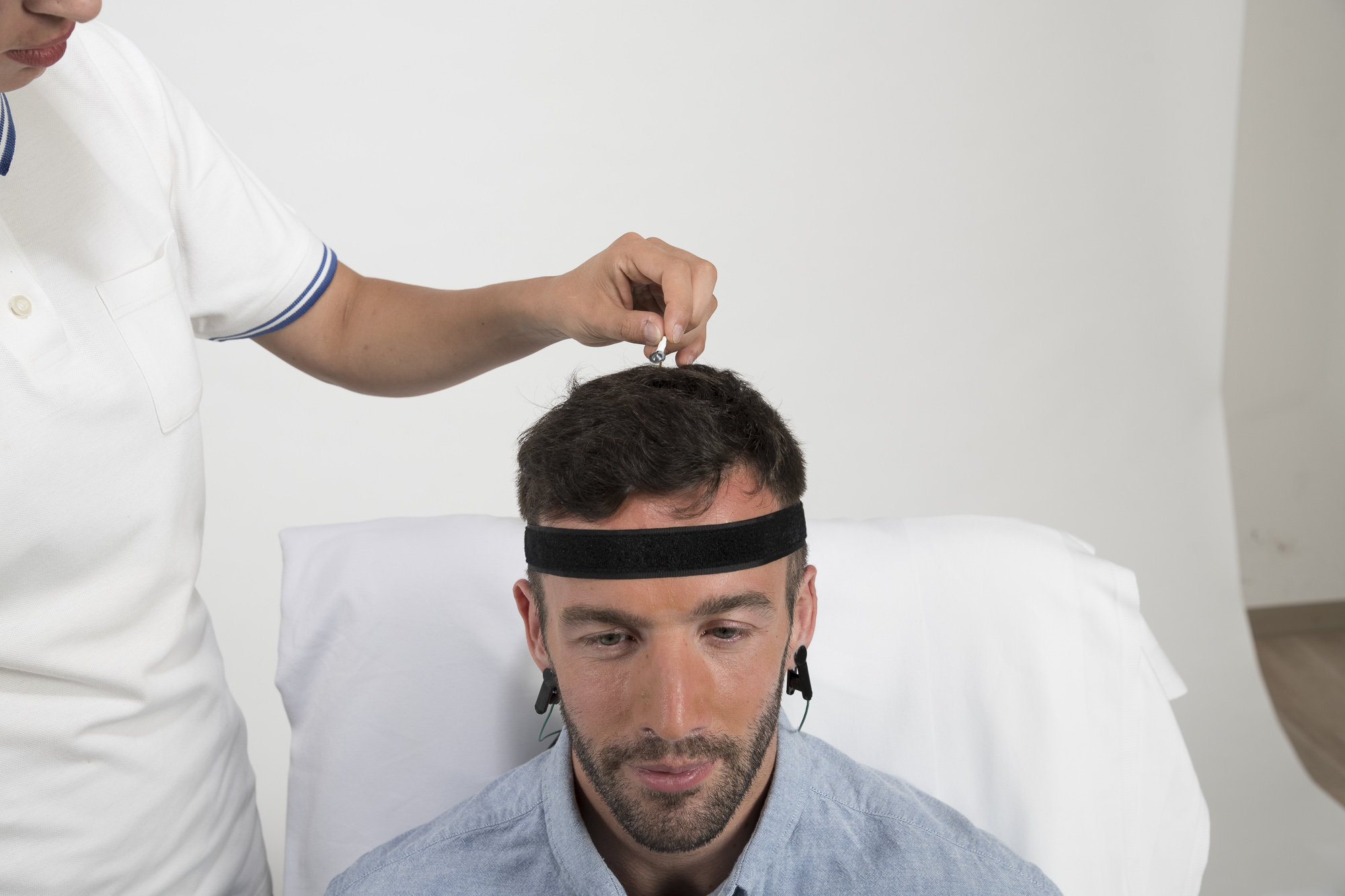Controlling brain activity
What is Neurofeedback?
Neurofeedback is a subcategory of biofeedback and a therapy method for self-regulation of the brain.
The positive effect of the method has been proven in science and practice for years for a number of mental illnesses such as ADHD or depression. However, neurofeedback is also increasingly being used as a natural method for improving performance in sport, music or work to promote concentration and manage stress.
In neurofeedback, brain activity is measured in the form of EEG signals and reported back to the client. This helps clients to learn to understand and change their own brain activity and thus positively influence it.
The first noticeable effects of neurofeedback training usually occur after just 5-7 sessions. For lasting consolidation, at least 15-20 sessions are recommended. The training should take place regularly 1-2 times a week.
Neurofeedback has also been scientifically investigated for a long time. There is therefore sound evidence of effectiveness for many indications in the form of controlled studies. Meta-analyses have shown medium to large effects.
Possible areas of application for neurofeedback according to studies include:
- ADHD
- Autism spectrum disorders
- Depression, burnout
- Sleep disorders
- Post-traumatic stress disorders
- Addictive disorders
- Epilepsy
- Tic disorders, Tourette’s
- Peak performance training (e.g. competitive sports)
Depending on the area of application and based on an individual analysis at the beginning, EEG derivations and frequency bands are selected for the training.
Example: Theta beta training to improve concentration in ADHD
The training is playfully structured in the form of a car racing game. As soon as the recorded EEG frequency bands move into the desired threshold values and reflect a relaxed, focussed state, the car drives off. The brain is therefore rewarded immediately. Through frequent repetition and regular practice, concentration can be demonstrably increased over the long term and can also be called upon in everyday life in the future.
OPERANT CONDITIONING
How does Neurofeedback work?
At the beginning of each session, EEG electrodes are attached to the trainee’s head. This records brain activity and provides feedback on the screen.
The first session is used to analyse whether there are any conspicuous activity patterns that could be linked to symptoms or stand in the way of peak performance. Based on this, a personalised training plan is drawn up. Most training protocols work with one or two neurofeedback electrodes – so it doesn’t take long to attach them.
During training, the software then analyses whether there is currently more or less of a certain brain activity in the brain. If the brain increases the desired activity, it is immediately rewarded. The reward can be given in a variety of ways (e.g. games, videos, music – the important thing is that the client enjoys it). The brain is therefore motivated to increase this activity and perform it more frequently. This process mainly takes place unconsciously. The training parameters are constantly monitored and individually adjusted by the therapist.

Example of neurofeedback application: patient with ADHD
A patient diagnosed with ADHD states as a therapy goal that he would like to improve his concentration and learn routines for everyday life that will support him in learning and later in his professional life.
- Analysis:
For neurofeedback diagnostics, a profile was created to analyse the ratio of the common EEG frequency bands at rest with eyes open and closed, as well as during cognitive tasks (quiet arithmetic and quiet reading). In particular, the amplitude curve of the theta band and the beta band was found to be conspicuous. During the cognitive tasks, there is an increase in the amplitude of the theta band and a simultaneous decrease in the amplitude of the beta band. This is unfavourable for the successful completion of a cognitive task. This neurophysiological finding thus coincides with the subjective perception of poor concentration.
The theta band generally correlates with a tired, daydreaming state. Therefore, a high amplitude of the theta band during active information processing is rather unfavourable and is associated with easy distractibility. The beta band generally correlates with a focussed state. Therefore, a high amplitude of the beta band during active information processing is favourable and is associated with good concentration performance.
2. training:
The training goal is to reduce the theta band while simultaneously increasing the beta band in order to improve concentration performance. In addition, the high beta band (correlated with stress and artefacts) should not increase. The client has chosen a car race as feedback. The training screen is set up so that a playful video in the form of a go-kart race runs as soon as and as long as all frequency bands are in the predefined threshold range at the same time. The threshold range is individual in each case and is usually adjusted several times during a session.
